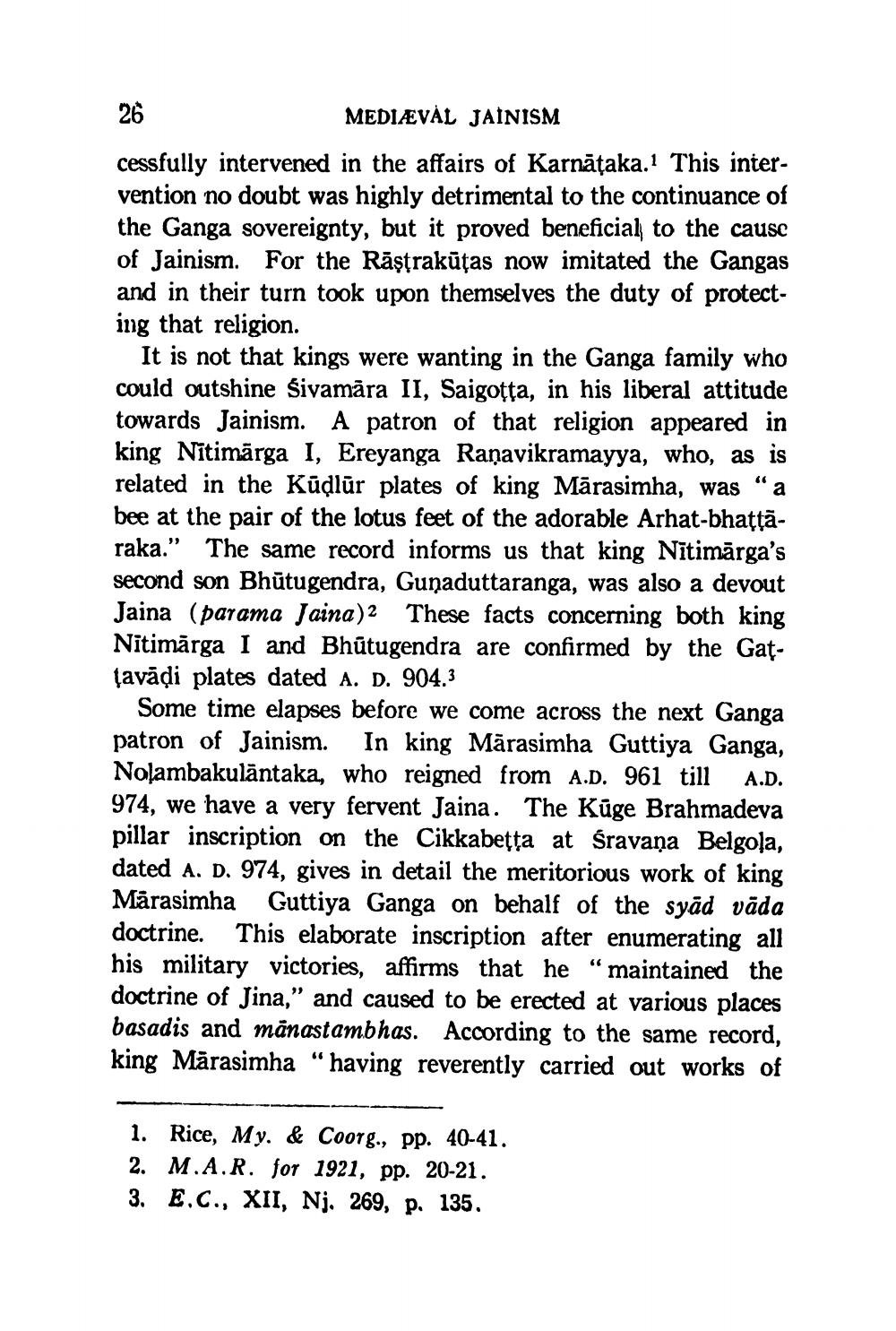________________
MEDIÆVÁL JAINISM cessfully intervened in the affairs of Karnātaka. This intervention no doubt was highly detrimental to the continuance of the Ganga sovereignty, but it proved beneficial to the cause of Jainism. For the Răştrakūtas now imitated the Gangas and in their turn took upon themselves the duty of protecting that religion.
It is not that kings were wanting in the Ganga family who could outshine śivamāra II, Saigotta, in his liberal attitude towards Jainism. A patron of that religion appeared in king Nītimārga I, Ereyanga Raņavikramayya, who, as is related in the Küçlür plates of king Mārasimha, was “a bee at the pair of the lotus feet of the adorable Arhat-bhattāraka.” The same record informs us that king Nītimārga's second son Bhūtugendra, Gunaduttaranga, was also a devout Jaina (parama Jaina)2 These facts concerning both king Nitimārga I and Bhūtugendra are confirmed by the Gattavādi plates dated A. D. 904.3
Some time elapses before we come across the next Ganga patron of Jainism. In king Mārasimha Guttiya Ganga, Nolambakulāntaka, who reigned from A.D. 961 till A.D. 974, we have a very fervent Jaina. The Kūge Brahmadeva pillar inscription on the Cikkabetta at śravana Belgola, dated A. D. 974, gives in detail the meritorious work of king Mārasimha Guttiya Ganga on behalf of the syās vāda doctrine. This elaborate inscription after enumerating all his military victories, affirms that he "maintained the doctrine of Jina,” and caused to be erected at various places basadis and mänastambhas. According to the same record, king Mārasimha “having reverently carried out works of
1. Rice, My. & Coorg., pp. 40-41. 2. M.A.R. for 1921, pp. 20-21. 3. E.C., XII, Nj. 269, p. 135.




